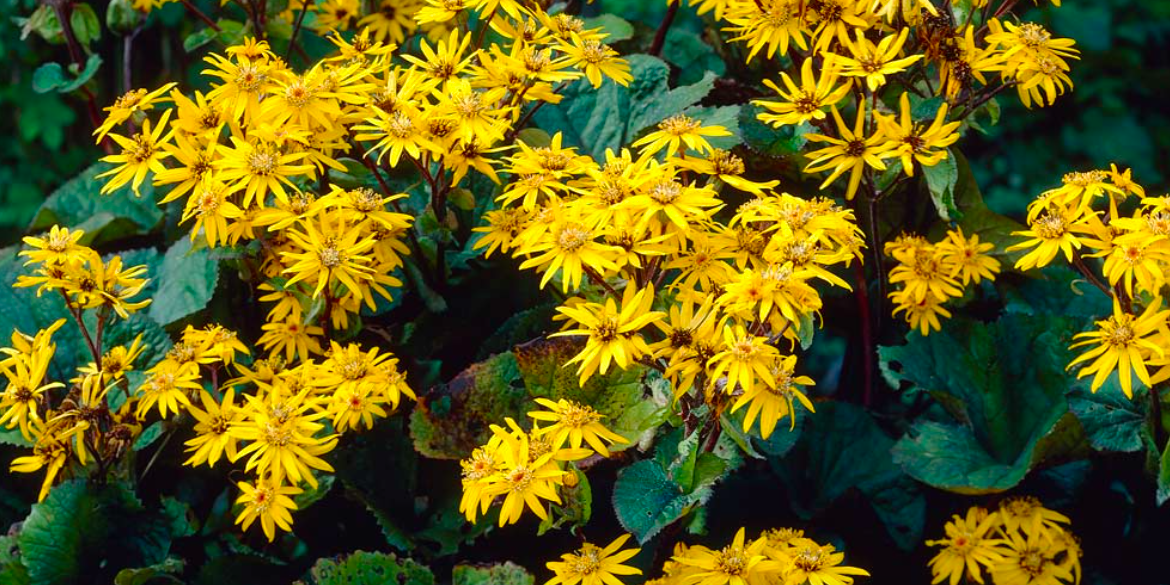Plant ID: LIGULARIA DENTATA ‘OTHELLO’
Ligularia Othello
Among the quiet royalty of the shade garden, there is a plant that commands attention without ever raising its voice — Ligularia dentata ‘Othello.’ While many gardeners chase the sun with their plant selections, ‘Othello’ thrives where light trickles in gently, offering drama and depth to spaces often overlooked. Its large, rounded leaves emerge in spring with a purplish underside, only to reveal tall spikes of sunny yellow daisies in mid- to late summer. In the cool morning light, the contrast between the deep foliage and golden blooms can feel almost theatrical.
Region
Ligularia ‘Othello’ is not a native in the North American sense — its lineage traces back to Asia — but it has adapted comfortably to temperate gardens across the U.S., Canada, and Europe. Unlike prairie flowers that bask in open skies, this perennial has evolved to relish moisture and shelter. It is happiest near a pond’s edge, along a shaded border, or nestled under the protective canopy of taller shrubs and trees. In regions with hot summers, it will appreciate deep shade during the harshest afternoon hours. While some purists may resist non-native ornamentals, ‘Othello’ earns its keep by being well-mannered and non-invasive — a graceful guest that knows its place in the garden.
what to know
Ligularia ‘Othello’ offers an architectural quality that’s rare in shade plants. The foliage alone can span 8–12 inches across per leaf, forming a lush clump up to 3 feet in height and width. In spring, the leaves push through the soil with a reddish tint, slowly expanding into glossy green discs with a hint of purple still clinging to their undersides. This dual coloring gives the plant a richness — the garden equivalent of a reversible coat, one side formal, the other adventurous.
The true spectacle arrives in midsummer when tall, sturdy stems rise above the foliage, each crowned with a cluster of golden-yellow, daisy-like flowers. Against the deep green leaves and shaded backdrop, the blooms seem to carry their own sunlight. These flowers attract bees and other pollinators.
Moist soil is the plant’s most loyal companion. In fact, if there’s one surefire way to disappoint ‘Othello,’ it’s to let the soil dry out completely. Leaves will droop dramatically when thirsty, a subtle reminder to fetch the watering can. But in the right location — rich, moist, well-drained soil with dappled shade — ‘Othello’ can look fresh and regal all season long. Pair it with hostas, ferns, or astilbes for a layered, woodland feel, or let it stand boldly as a solo performer beside a shaded pathway. After frost, the plant dies back to the ground but returns reliably each spring.
general information
Exposure: Part Shade to Full Shade
Soil: Moist, Rich, Well-Drained
Height: 36 inches
Spread: 24 inches
Hardiness Zone: 4
Bloom Time: Mid to Late Summer
